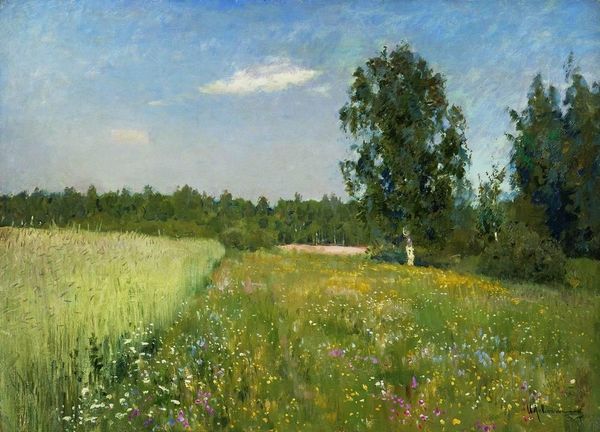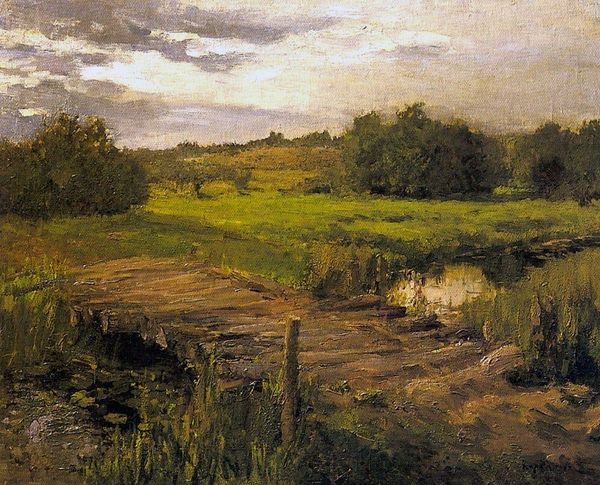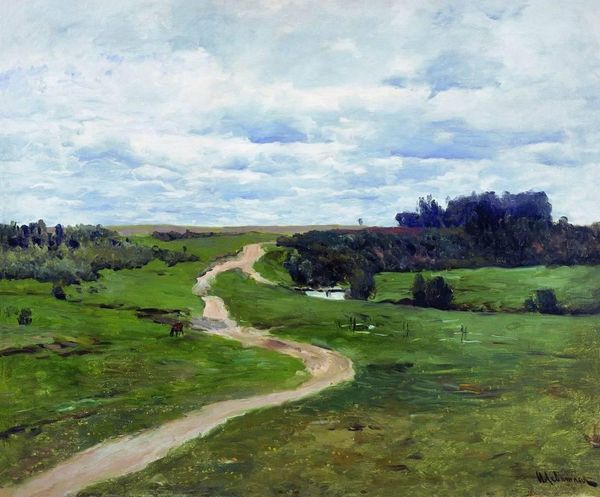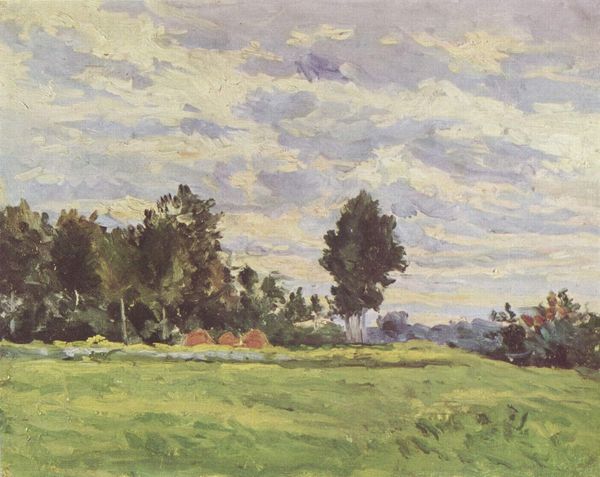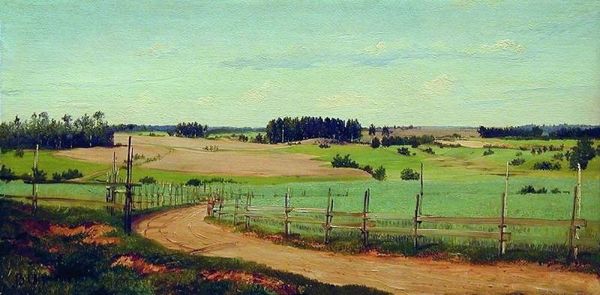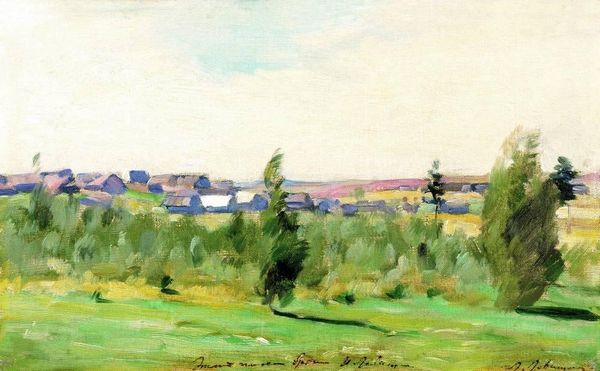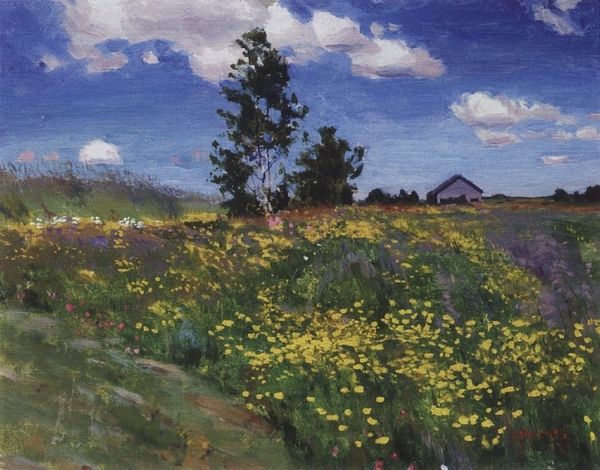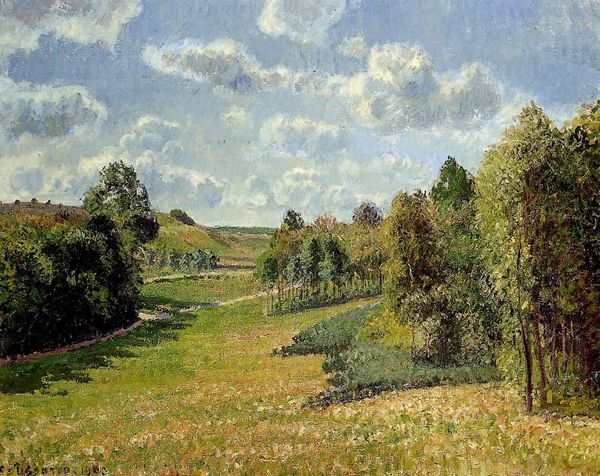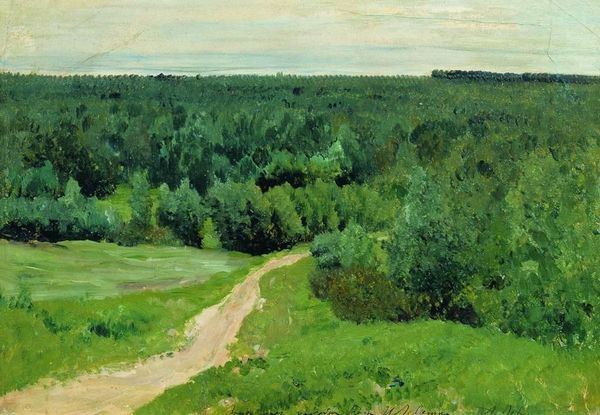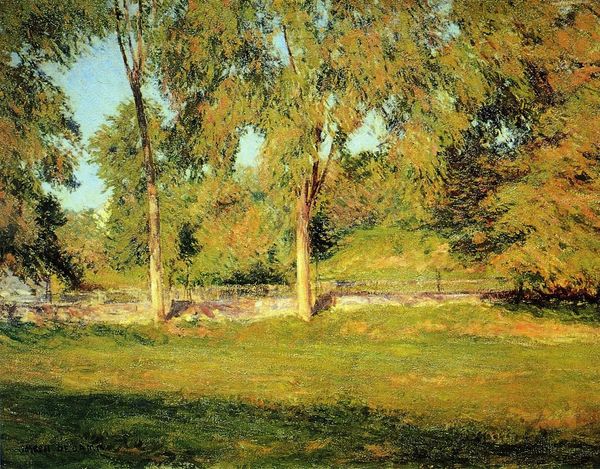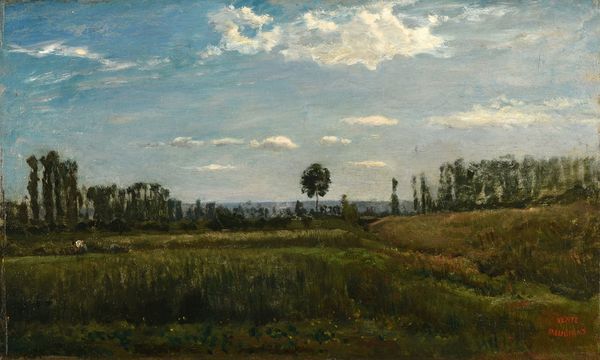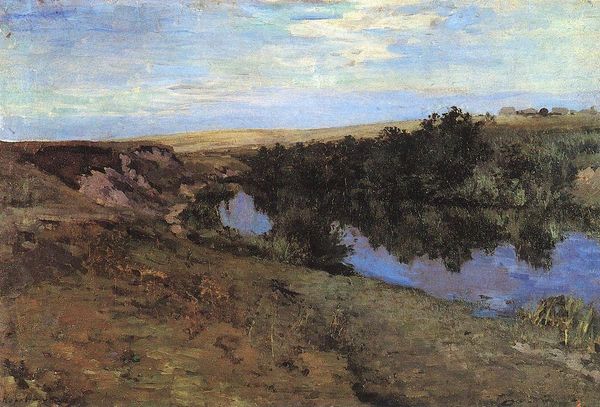
Copyright: Public domain
Curator: This is "Evening Shadows" by Isaac Levitan, painted in 1892 using oil paint. What do you make of it? Editor: It's overwhelmingly…peaceful. The sweeping green landscape, bathed in that soft, late-day light…it feels very bucolic and serene. Curator: It's important to remember Levitan's materials here. Oil paint was becoming increasingly industrialized, more accessible. These manufactured pigments allowed artists to achieve effects they couldn’t easily before. Editor: That access impacted the *subject* as well. Consider the social context of 19th century Russia – emancipation, the rise of agrarianism. Levitan’s focus on the ordinary rural landscape connects with this growing appreciation for peasant life. There’s a clear move away from romanticizing the aristocracy. Curator: Exactly. It’s also worth considering his brushwork. The paint is applied relatively thinly, with a degree of looseness. You see less focus on hyper-realism, and more emphasis on capturing light and atmosphere, suggesting a new artistic labour. Editor: The ‘loose’ brushwork also emphasizes transience. Shadows lengthen; day is ending. Levitan's engagement with this fleeting moment asks, "What does this romantic view omit?". This perspective certainly refutes some historical injustices experienced by many inhabitants of these lands. Curator: It highlights a connection, or perhaps disconnect, from natural cycles, which changed rapidly through increased industry. Editor: A crucial detail – thank you for that emphasis! This connects with broader philosophical shifts that questioned human dominion over nature. The green evokes freshness, while the approaching evening and darker, upturned soil prompts us to reckon with issues of labor, ecology, and representation of rural existence. Curator: Understanding the material context certainly encourages appreciation, it enriches a painting of bucolic tranquility with complex insight to cultural, industrial, and theoretical understanding. Editor: A perspective of a historical period reflected in the simplicity of landscape and yet speaking to complex realities – yes, a powerful visual testimony.
Comments
No comments
Be the first to comment and join the conversation on the ultimate creative platform.
